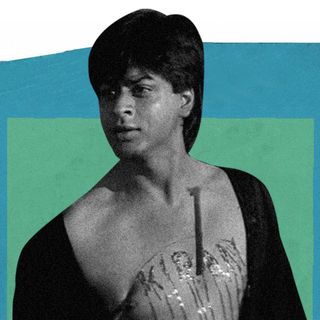
Tell Me More: Talking Media Ethics and Representation With Kavita Devi, Editor of Khabar Lahariya
“A Dalit woman reporter will fight for more stories about marginalized communities because she’s most likely dealt with the same issues herself.”

In The Swaddle’s interview series Tell Me More, we discuss crucial cultural topics with people whose work pushes societal boundaries.
Kavita Devi is the co-founder and editor of rural news platform Khabar Lahariya and the only Dalit member of the Editor’s Guild of India. She conceptualizes, plans, and executes rural news reporting with a staff of reporters and anchors a weekly news commentary show named “The Kavita Show.” The Swaddle’s Aditi Murti spoke to Kavita about mainstream media’s failures with rural journalism and why Dalit women reporters are the future of Indian news media.
The Swaddle: Tell us a bit about your childhood and how you decided to become a journalist. What about your colleagues at Khabar Lahariya?
Kavita Devi: Honestly, I had no idea what I was going to become as a child. My childhood wasn’t like what you’d expect a ‘normal’ child to have. There was no thinking and planning my goals and career path. I didn’t receive an education as a child — in fact, I started studying post-marriage and that too, with much difficulty and pushback from people around me. I studied with the help of an NGO for six months, and I was exposed to ideas like feminism, bigotry, discrimination. The NGO I’d associated myself with had a small magazine — written in the local Bundeli language, which the villagers enjoyed — in which I started doing minor production work like making illustrations. After the magazine shut, I had many conversations with women who’d worked with me in that magazine and decided to start something together. That’s how Khabar Lahariya began.
The women I work with at Khabar Lahariya are from vastly diverse backgrounds. We’d decided to work with Dalit, Adivasi, Muslim — basically women from the margins. A lot of these women had only primary school educations. Some couldn’t write anything beyond their own name. A lot of women we work with began studying only after they started working with us. But, the thing is, while we interviewed these women, they answered questions about the areas they lived in with ease and expertise. This made me think — these women aren’t literate or educated, but they’re extremely well versed with the societal norms, community, general affairs, and geography of the regions they’re from. What else do you need from a good reporter? We trained these women and brought them into our team — they’d go report stories in places that mainstream media wouldn’t venture into, bring back news, and the women who’d had a primary school education would write down the news.
TS: How does mainstream media tackle rural news? Have you seen any inconsistencies or flaws in how people in the rural parts of India are showcased in the news?
KD: See, I’ve observed the media since 2002, and while there’s been a bit of change now, what I saw was that the media just didn’t go to villages. Mainstream media simply had no reach in rural regions, jungles, and the hinterlands. The media would only show up during large protests or violent crimes. Even if the media did report on rural affairs, it’d be factually incorrect — we’d go follow up stories reported by mainstream media and find out that it was all fake news.
Plus, the way the media reports on women and caste issues is reprehensible. Women are frequently shamed and shown in a negative light by news anchors. As for caste issues — they simply do not seem to exist in mainstream media. The way I see the news is that if you need to report on something — say progress, you go to that particular region to look and confirm for yourself. But mainstream media obtains a photo, shows that photo repeatedly, and anchors around it. How can you report about violence against women without talking to women and their families?
Related on The Swaddle:
News Reporting of Sexual Violence Is Propagating Rape Culture
TS: You recently went to report on the caste-motivated rape and murder in Hathras, alongside a large group of mainstream media journalists. This was a rare occasion in which mainstream news media did decide to cover a rural story. How did this coverage happen and what could have been better?
KD: When I first showed up at Hathras, I was quite glad that so many mainstream news channels had shown up. But, the minute we got to the [deceased victim’s] house — we saw a flood of journalists overcrowding the rooms and the small yard that belonged to the family. There was constant screaming, shouting, drone cameras were flying about — the family hadn’t eaten in days and the children were eating dirt. Reporters shoved their mics and cameras into family members’ faces without their consent, even when they refused to be interviewed. Most importantly, I noticed that [the family members] were hungry, but reporters and anchors ate junk food and fruits and drank bottled water around them. Anchors kept doing their make-up out in the open every hour. I understand that there’s news to report, but in the race to do so, the people I saw completely forgot basic empathy. It felt like a picnic in front of a grieving family.
There are certain rules set in place for how a reporter should behave while covering traumatic events. The way you speak, the tone and volume with which you speak, the empathy you show, the type of questions you ask — whether they’re leading, roundabout, or hurtful — all of these things matter. This isn’t only rape or murder, it is caste violence, and so, it is necessary to do that background research before you show up.
TS: Why, according to you, is mainstream media’s coverage of gender and caste violence so lazy?
KD: Look at it this way. When reporters go to Dalit Bastis (settlements) — the very few who do go — they wrinkle their nose or cover their faces with scarves because they cannot handle the smell. Why would any individual living in those Bastis speak to or give stories to these reporters if they behave like this, or refuse to drink the water that Dalit people drink?
You also need to pay attention to the caste, class, and religious beliefs of mainstream journalists to understand the lack of motivation. If there were journalists who felt a kinship with the plight of Dalit communities, they’d work hard to cover it! I’d recently worked to cover a story in my hometown (Banda, Uttar Pradesh) where a channel carrying the city’s filthy water flooded a Dalit Basti. Later, I went to Delhi to speak about this particular story, and a few people from the same caste came to speak to me and told me they felt a sense of community after reading this coverage. That was a particularly moving moment for me, and I realized there’s no point in being ‘media’ unless you’re bringing up important issues.
Related on The Swaddle:
Why We Are Able to Empathize With Some, Never All
TS: Dalit reporters, especially Dalit women reporters, are grossly underrepresented in mainstream media. What change can they bring into media?
KD: There’s an enormous amount of potential here, but someone has to give Dalit women a platform so that their voices can reach lawmakers and politicians. Privileged people who control the media in urban areas mostly don’t want Dalit women on their platforms — they want degrees and a certain ‘refinement’ that rural Dalit women cannot bring to the table because nobody gave them the chance to study. The problem is also gendered — no one can imagine a woman as a reporter. They’d rather see women as nurses, teachers, or ASHA workers — jobs that have fixed timings, minimal male contact, and safety.
If Dalit women do get decent representation in mainstream media, they will absolutely reform the way gender and caste violence is covered. They will pitch more stories about marginalized communities and actively work towards bringing more coverage there. A Dalit woman reporter will fight for more stories about marginalized communities because she’s most likely dealt with the same issues herself.
TS: What type of reporters does Indian media need now?
KD: Hopefully those who focus on ground conflicts more and don’t shout at each other on T.V. Reporters should go to far-flung areas to find stories. When you’re reporting, make sure you’re not just speaking to men — speak to women, teenagers, children, elders — bring different perspectives to a story. Be empathetic, careful, and strong-willed, because we’re all aware that news media can further fuel the violence between communities. Don’t half-ass your job, don’t be a sell-out, and please don’t succumb to fake news for virality.
This interview has been translated from Hindi, and condensed, and edited for clarity.
Aditi Murti is a culture writer at The Swaddle. Previously, she worked as a freelance journalist focused on gender and cities. Find her on social media @aditimurti.
Related


Bollywood Needs Heroes Who Don’t Self‑Destruct When They’re in Love
